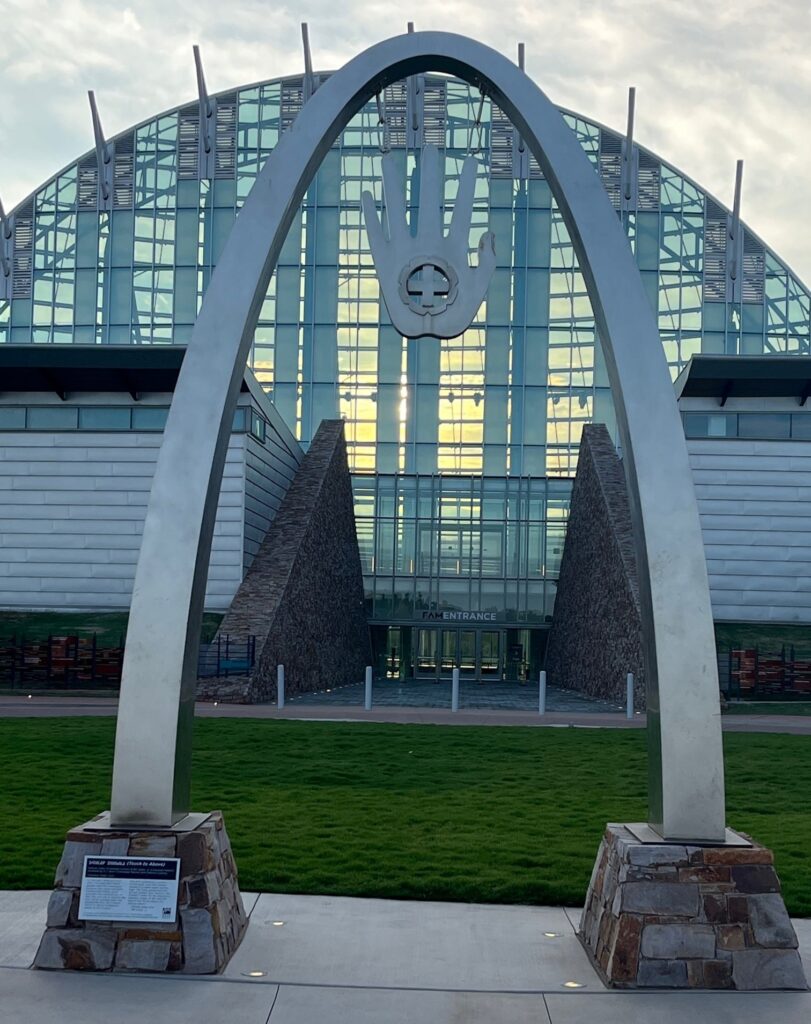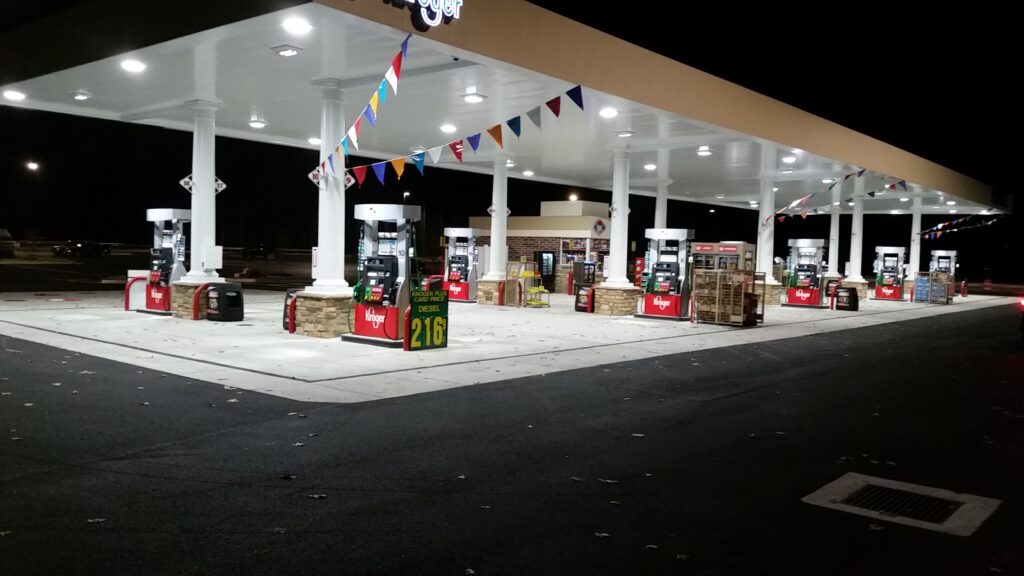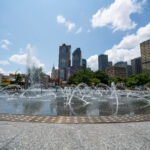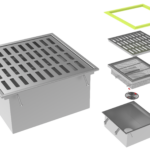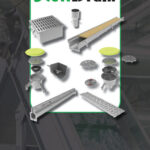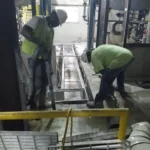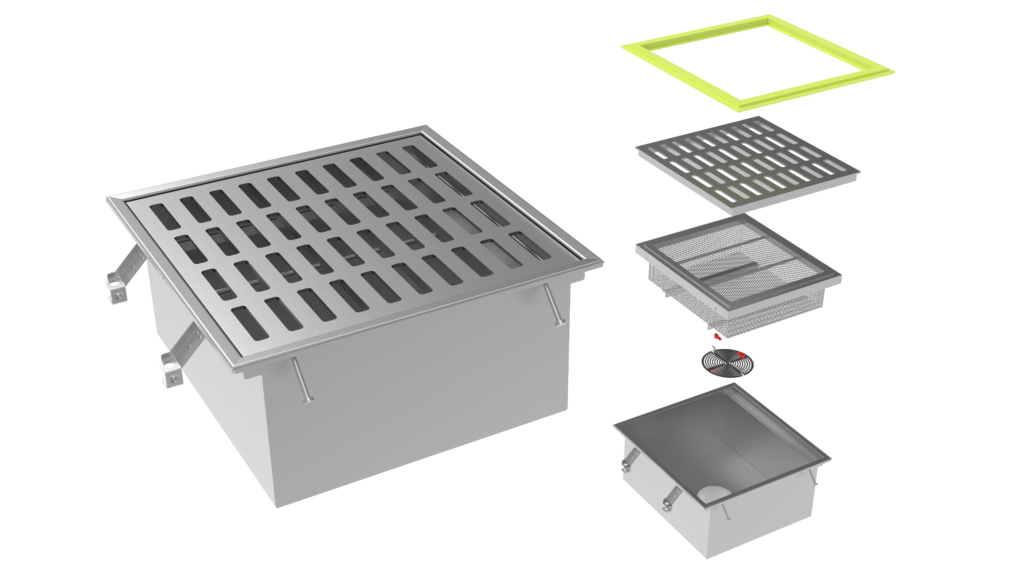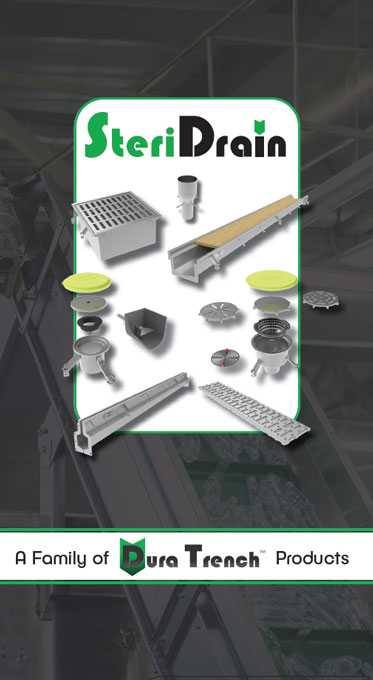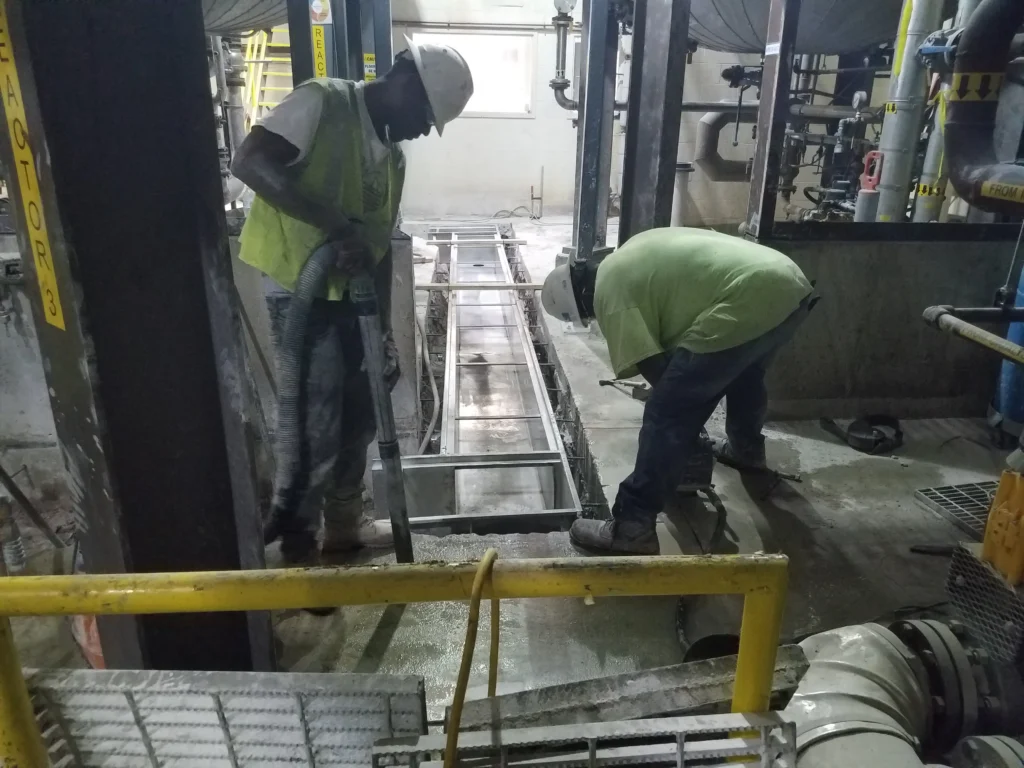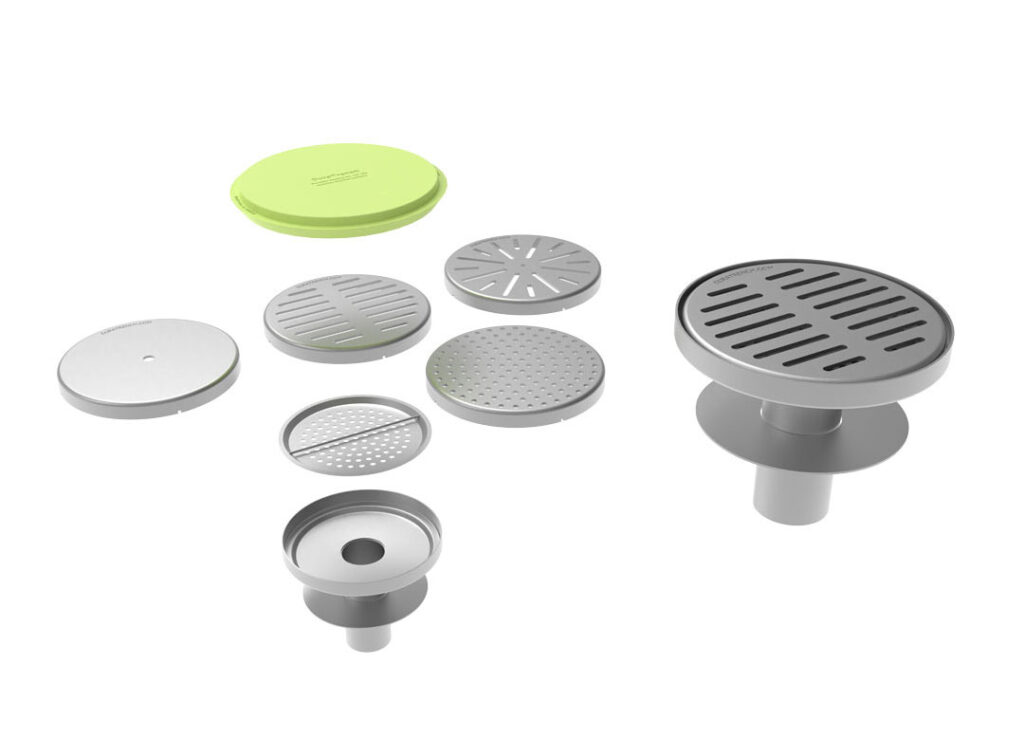Run-off of all kinds can overwhelm the various systems you have in place in landscaped areas. During the winter, if the region that you live in has heavy snows or lots of precipitation, standing water or a lot of run-off can impact your use of areas with hardscaping. Thankfully, hardscaped areas can benefit from easy-to-install drainage solutions just like landscaped areas.
Installing a trench drain is often the best solution for drainage needs in hardscaped areas. This is because trench drains are designed to be rigid and stable, and they can withstand the pressures and challenges of foot traffic or even wheeled traffic. If you are struggling with drainage issues where you have installed hardscaping, you need to keep reading to learn more about adding a trench drain to these areas.
What is Hardscaping?
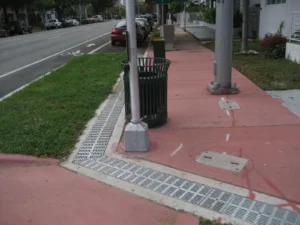 Hardscaping can take a variety of forms. Your hardscaping might be gravel, paving stones, or even cement walkways or paths. Hardscape is solid and unchanging and intended to prevent erosion and problems like muddy, unusable areas in your yard or on your property. Retaining walls, patios, outdoor kitchen areas, water features, and things like gazebos and decks also fall under the heading of hardscaping. Even your driveway is technically part of your hardscaping.
Hardscaping can take a variety of forms. Your hardscaping might be gravel, paving stones, or even cement walkways or paths. Hardscape is solid and unchanging and intended to prevent erosion and problems like muddy, unusable areas in your yard or on your property. Retaining walls, patios, outdoor kitchen areas, water features, and things like gazebos and decks also fall under the heading of hardscaping. Even your driveway is technically part of your hardscaping.
When you have issues with drainage in these areas, you need to be able to count on the drainage solution that you install. This means that you need to select a drainage type that will not stick out like a sore thumb but which can handle a lot of water volume from time to time with ease. As a rule, the more efficiently you can remove water run-off from these surfaces, the better you will be able to protect your landscaping from damage.
Trench drains are often the most ideal solution for this kind of need for a whole host of reasons. These drains come in many shapes and sizes and can be customized to offer an attractive presentation that will not disrupt the beauty of your yard. These drains are also hardy and simple to install, which makes them the perfect, long-lasting solution for hardscaping drainage.
How to Add a Trench Drain to Your Hardscaping
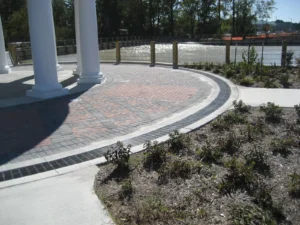 In most situations where hardscaping is present, there is a natural slope that has been built into the surface. This slope is intended to direct water toward natural run-off areas. However, sometimes this slope just brings water to the base or bottom of the slope and then it puddles without being able to completely drain off. These areas are natural places where a trench drain can be ideally placed to collect unwanted water from spoiling your yard or making dangerous and slippery areas along walkways and paths.
In most situations where hardscaping is present, there is a natural slope that has been built into the surface. This slope is intended to direct water toward natural run-off areas. However, sometimes this slope just brings water to the base or bottom of the slope and then it puddles without being able to completely drain off. These areas are natural places where a trench drain can be ideally placed to collect unwanted water from spoiling your yard or making dangerous and slippery areas along walkways and paths.
Additionally, if you have a fountain or a pool in your yard, you can easily add trench drains around this area to capture run-off and direct it away from the area of the water feature or the swimming pool. For more information on pool deck drainage systems, refer to this comprehensive guide: Definitive Guide on Pool Deck Drainage Systems. There are curved and radius-style trench drains that are perfect for this need and can be matched to the non-linear shape of these kinds of locations.
All of these various kinds of trench drains will offer a fairly discrete appearance at the level of your hardscaping, even if the trench below the surface is much larger than the trench drain opening. This allows you to be able to funnel any amount of water run-off away from a specific area without needing to look at a large grated drain.
Residential drains typically are placed at the base of a sloped driveway or along the edges of patios and paved pathways. You can also add this kind of drainage along graveled areas, be it your driveway or a walkway area. Trench drains are very flexible in this way and can be made to suit the needs of nearly any kind of drainage arrangement that is required for your home or business.
If you are worried about the appearance of the grating associated with your installed trench drains, you can actually have custom trench drain grates made with designs or in specific and unique colors. These grates can be made from plastic or metal of various kinds, all of which can be personalized or made more interesting to look at. This kind of added perk makes it easy to opt for trench drain installation in hardscaped areas that need to look their best all year round.
How do I Know How Large of a Trench Drain to Place?
If you have never installed a trench drain, you might want to work with a skilled design and installation expert to add trench drains to your property. The max possible volume of drainage that might be required in a specific area needs to be calculated to figure out what size trench drain you will need in order to cope with annual run-off. You can count on an installation expert to be able to help you pick the perfect size and design for your trench drain so that you don’t ever have to deal with standing water around hardscaped areas again.
Trench Drains Are Ideal for Hardscaped Areas
Hardscaping can make your yard beautiful and unique and can be essential for creating usable spaces in and around landscaped areas. Drainage in these areas can be tough to manage during the winter or the rainy season, however. This is why trench drains are so ideal for these spaces at home or the office. Adding a trench drain can make all the difference in problems with standing water or flowing water that might damage landscaped areas or make it hard to use places like patios and walkways.
If you are ready to install quality trench drains on your property, you will need to work with the skilled team at Dura Trench. We can help you to pick out the perfect drainage for your needs and can also ensure that you get access to an expert installation team who can place these drains on your property correctly.

